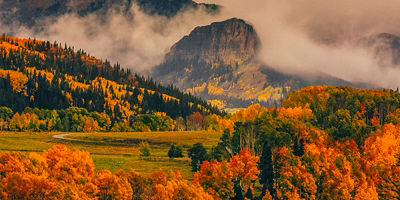
Every season offers something special at our country’s national parks. But winter often gets overlooked, even at parks that are best visited during the colder months. Here are 10 great reasons to make winter travel plans.
1. They’re Less Crowded
Here’s some convincing math: Yosemite National Park sees five-and-a-half times as many visitors in the month of August as it does the month of January. Besides the solitude (and much easier reservations), you also get to see the park through winter’s magical snowscape, while cross-country skiing, snowshoeing, and even ice skating beneath Half Dome and El Capitan. Other iconic parks that empty out in winter: Great Smoky, Yellowstone, Grand Canyon, and Arches.
2. It’s Cooler
Summer temperatures in California’s Joshua Tree often top the triple digits, but they linger in the 60s from December through February, making south-facing walls ideal for winter rock climbing. Death Valley National Park also cools down to the 60s, while Florida’s Everglades drops into the 70s. Big Bend National Park in Texas and Saguaro National Park in Arizona also cool down, creating ideal hiking and biking conditions in their lower elevations.
3. It’s Warmer
If you live in a cold climate and are looking for a warm-weather escape, winter is prime time at the southernmost parks. At Florida’s Biscayne, Everglades, and Dry Tortuga National Parks you can enjoy watersports like swimming, paddling, and snorkeling.
4. See Wildlife
In Wyoming’s Grand Teton and Yellowstone National Parks, the best time to spot gray wolves, coyotes, and bighorn sheep is in the winter months. Bison, moose, and elk can also be seen. In Florida’s Everglades and Biscayne National Parks, West Indian Manatee (sea cow) tend to gather in the warm waters during winter.
5. Track Animals
Where there’s snow on the ground, you can get a deeper sense of what animals are up to by tracking their footprints. Paw prints, claw prints, and hoof prints are easy to spot and follow in the snow. Do some research before you go to learn about animal activity in the park and help guide your tracking.























